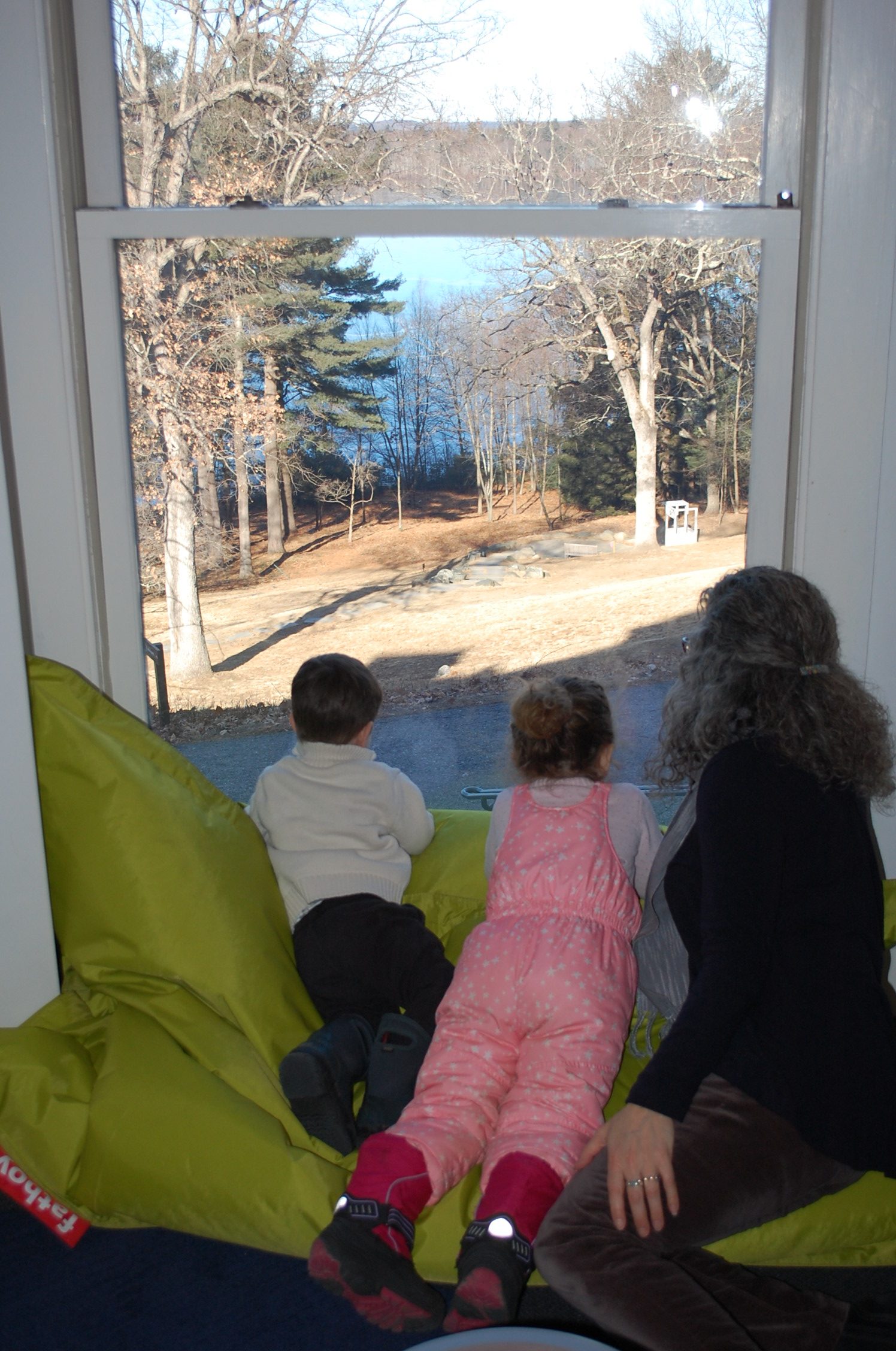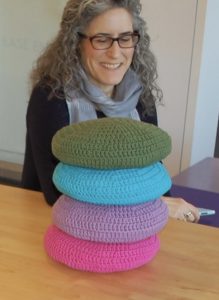Every visit for every child is unique!
Chris: Relation
Chris is verbally inquisitive, asking questions, stopping and looking, devoted to his relationship with Julie, as we’ve seen during her visits in the classroom (here, Chris shows Julie how he wraps rope around our branch).
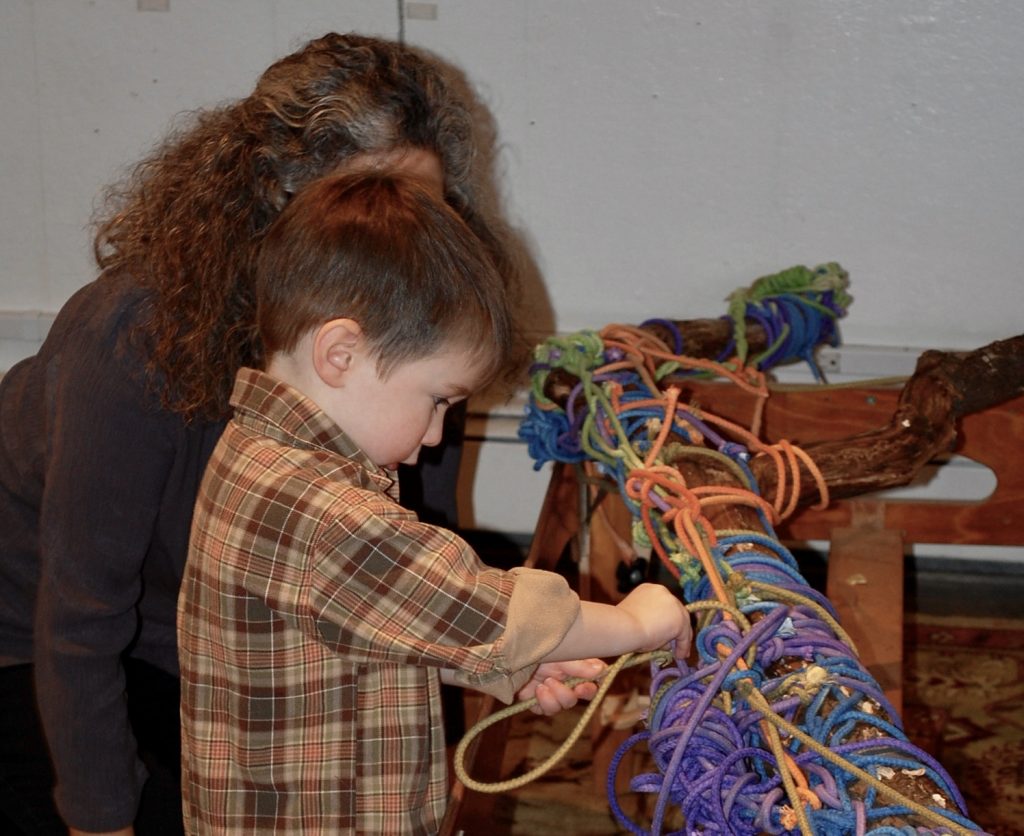
Stella: Creation
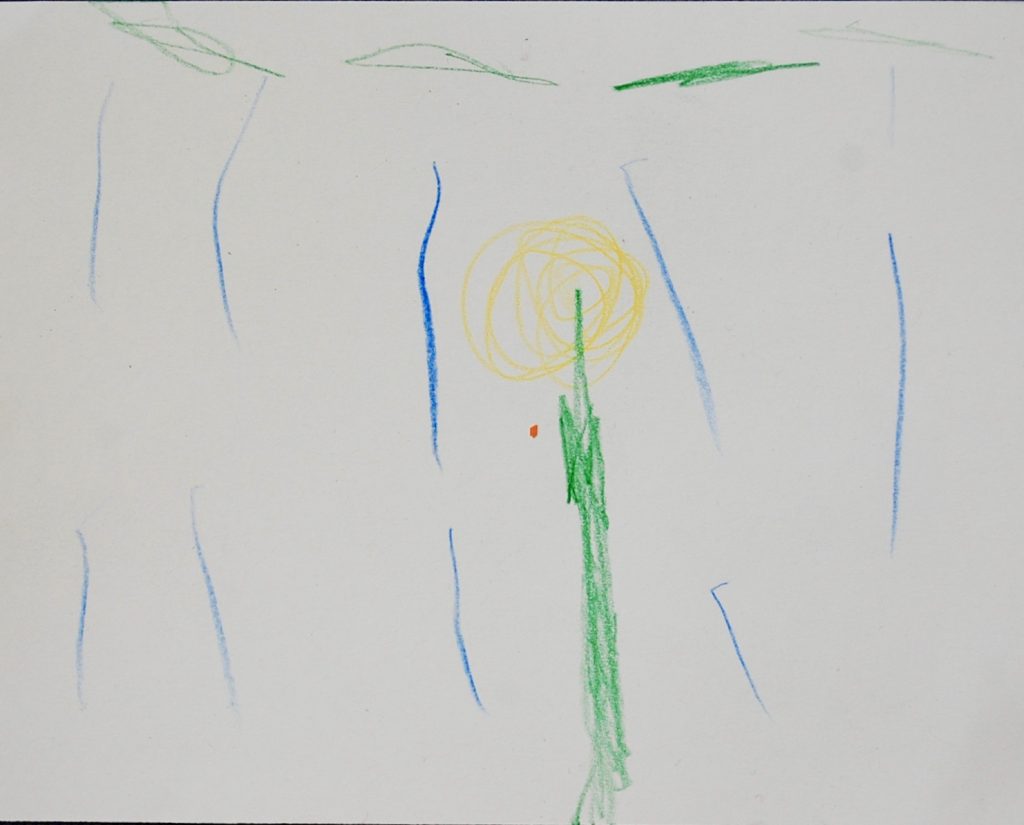
Stella tends to quietly create, engaging with materials with focus and intention, both in this drawing she made just previous to our visit, of a flower in the rain with clouds overhead, and in her explorations in the LAB, as we’ll see.
Starting off, both children are hesitant, walking very slowly up the sidewalk to the steps of the museum. Here Chris’ questions begin: Hey, what’s up there? he says, his eye on the giant panes of window on the second floor, above the entrance.
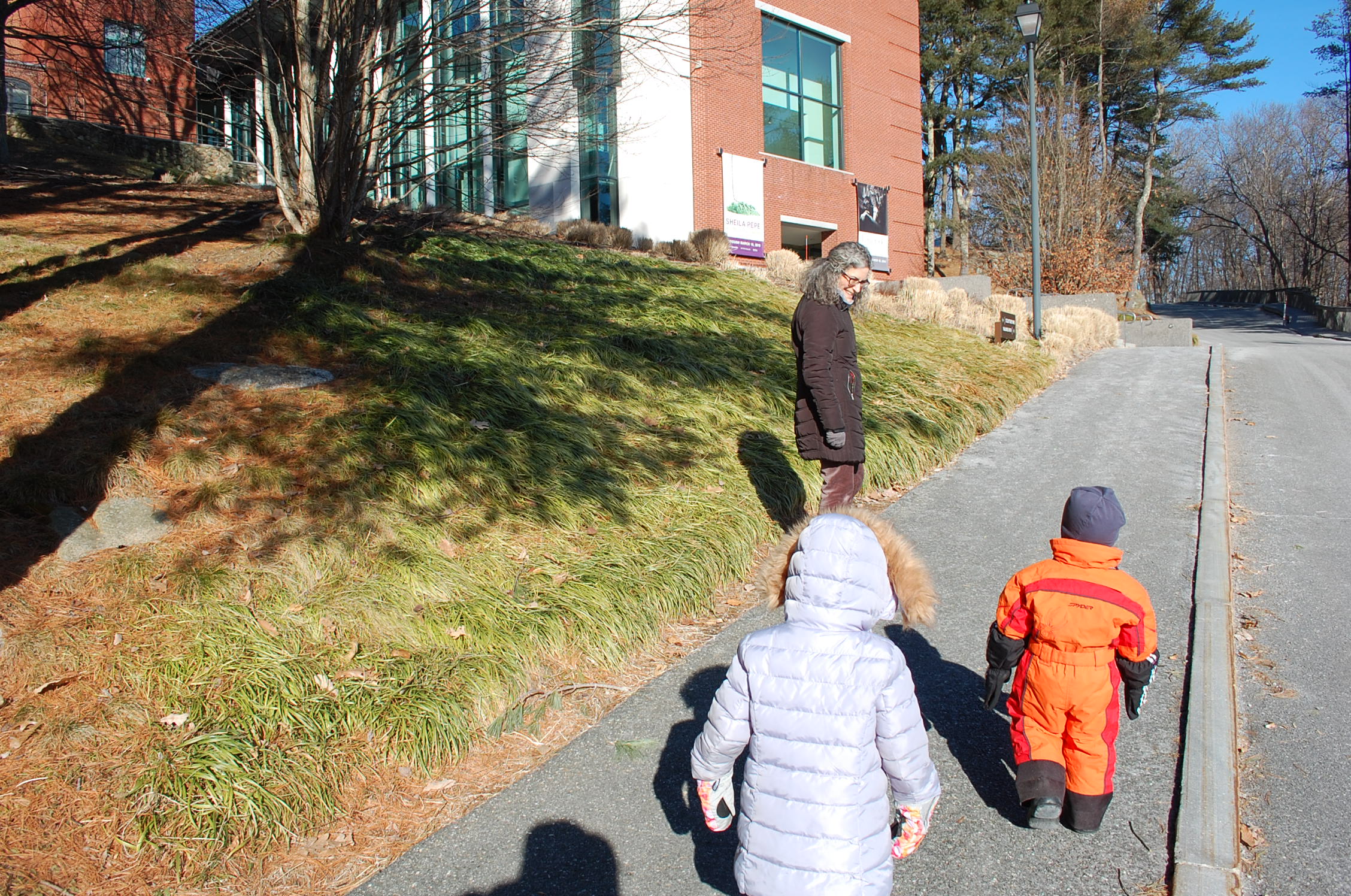
Inside, Chris wonders who the people are in the portraits outside the coat room (the deCordovas). Julie explains: this building was their house before it was the museum.

And what’s in the door at the end of the coat room? Julie opens it with her key – just an empty closet! Let’s go find a room with something more fun in it, Julie suggests. Maybe some kid stuff, Stella muses.
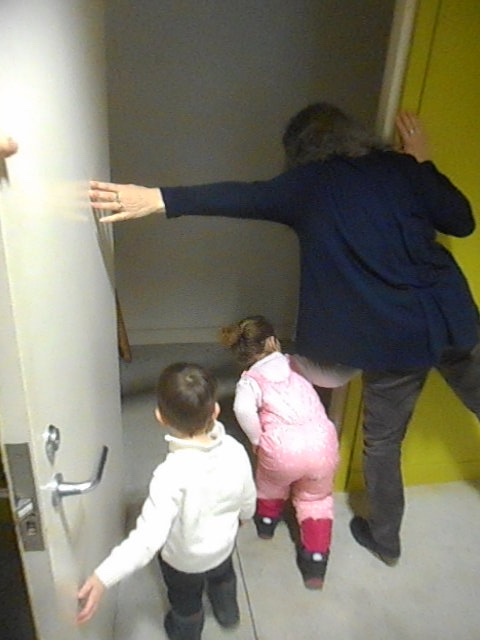
We spot rainbows on the floor on the way to the stairs. (We find more rainbows on the way out, too.)

When we reach the stairs, Chris leans down to touch the metal grate: What’s this? – The vent for the heat to come out of, Julie explains; the children put their hands over it: The heat is coming out, Chris notices. We continue climbing to the top. Stella and Chris glance briefly into the Linde gallery, then arrive at the Dewey gallery and look inside.
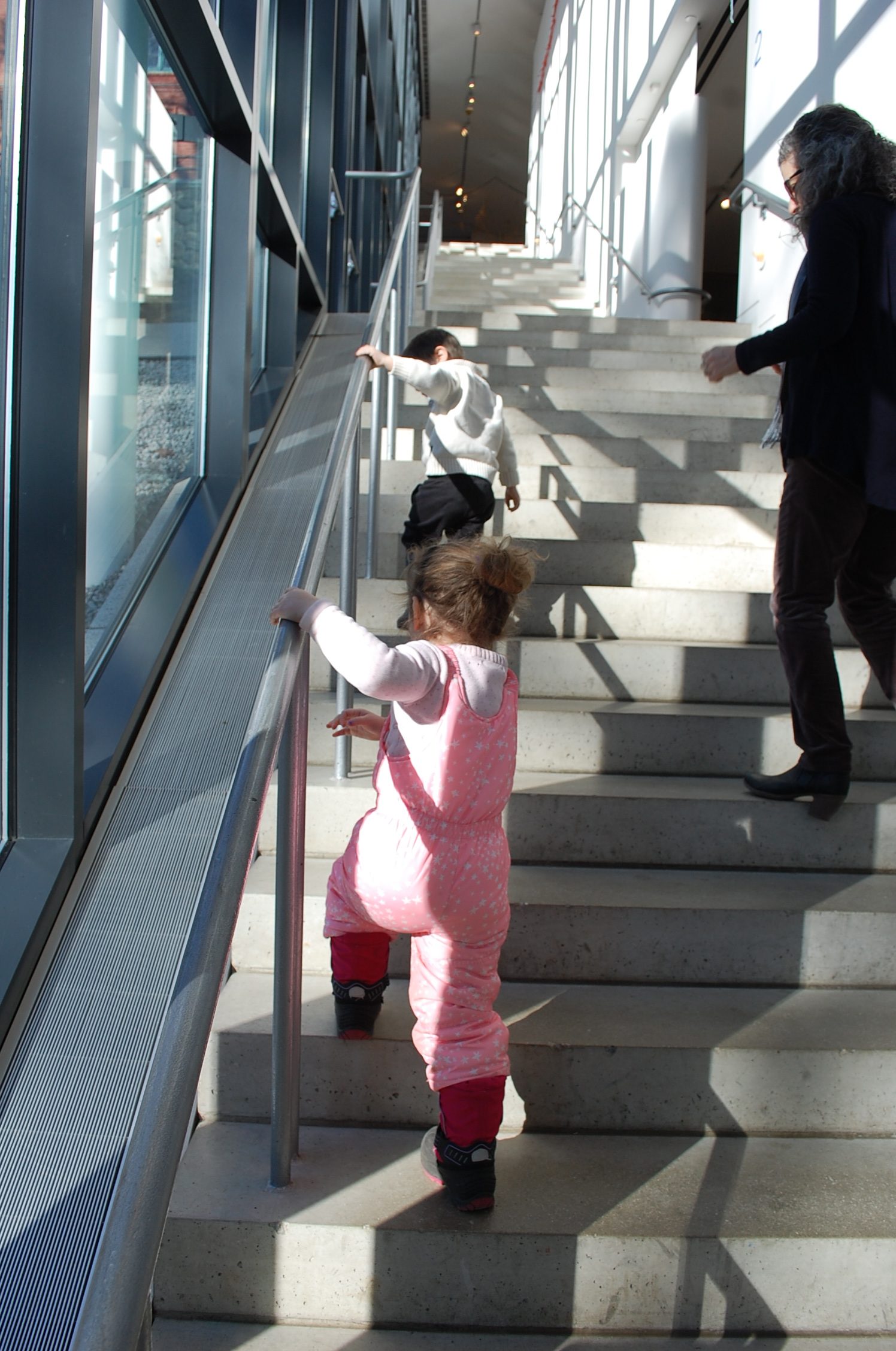
Nobody’s in here, Chris observes (perhaps remembering how full the room was during the Winter Sing). He enters with Julie. What’s this? he asks. A gallery, Julie answers.
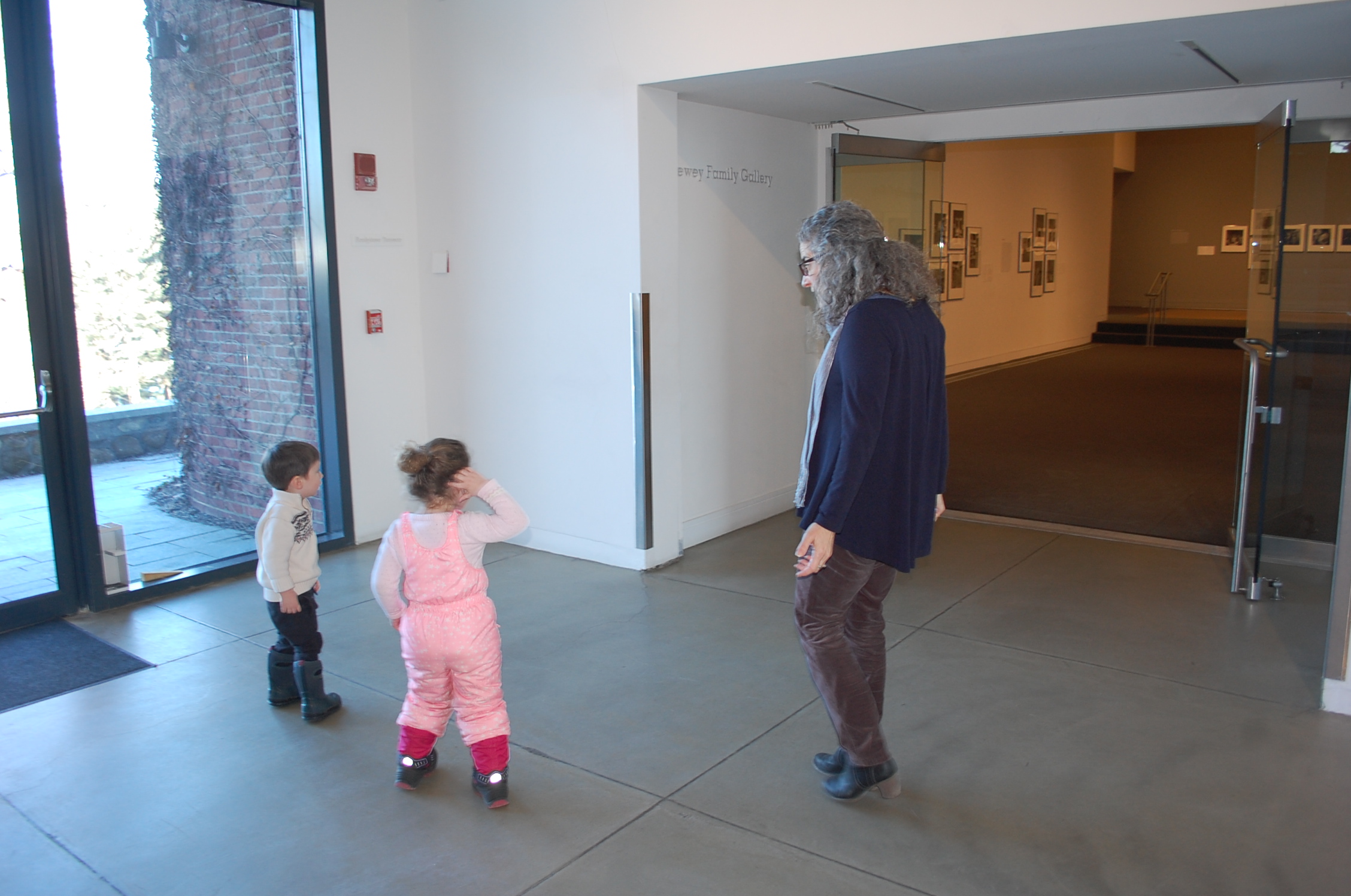
So many questions from Chris! What is a museum, anyway? Nothing like a house, a supermarket, a place of worship, or a preschool. Preschoolers’ work to make meaning of their world is especially transparent here in the museum, and Chris uses his growing relationship with Julie for this purpose.
Now we’ll see how Stella makes meaning of her world. She climbs the stairs and heads into the LAB yarn room with Mark. She seems very purposeful, as if she has been here before.
As Stella works cutting string and adding it to the installation, Chris and Julie arrive, and the children enjoy working together on this process. Generally, Chris is the cutter, providing pieces for Stella to drape over the extended strings.
After a bit he leaves the room, briefly visiting the gallery across the hall while Stella makes this cake out of pillows.
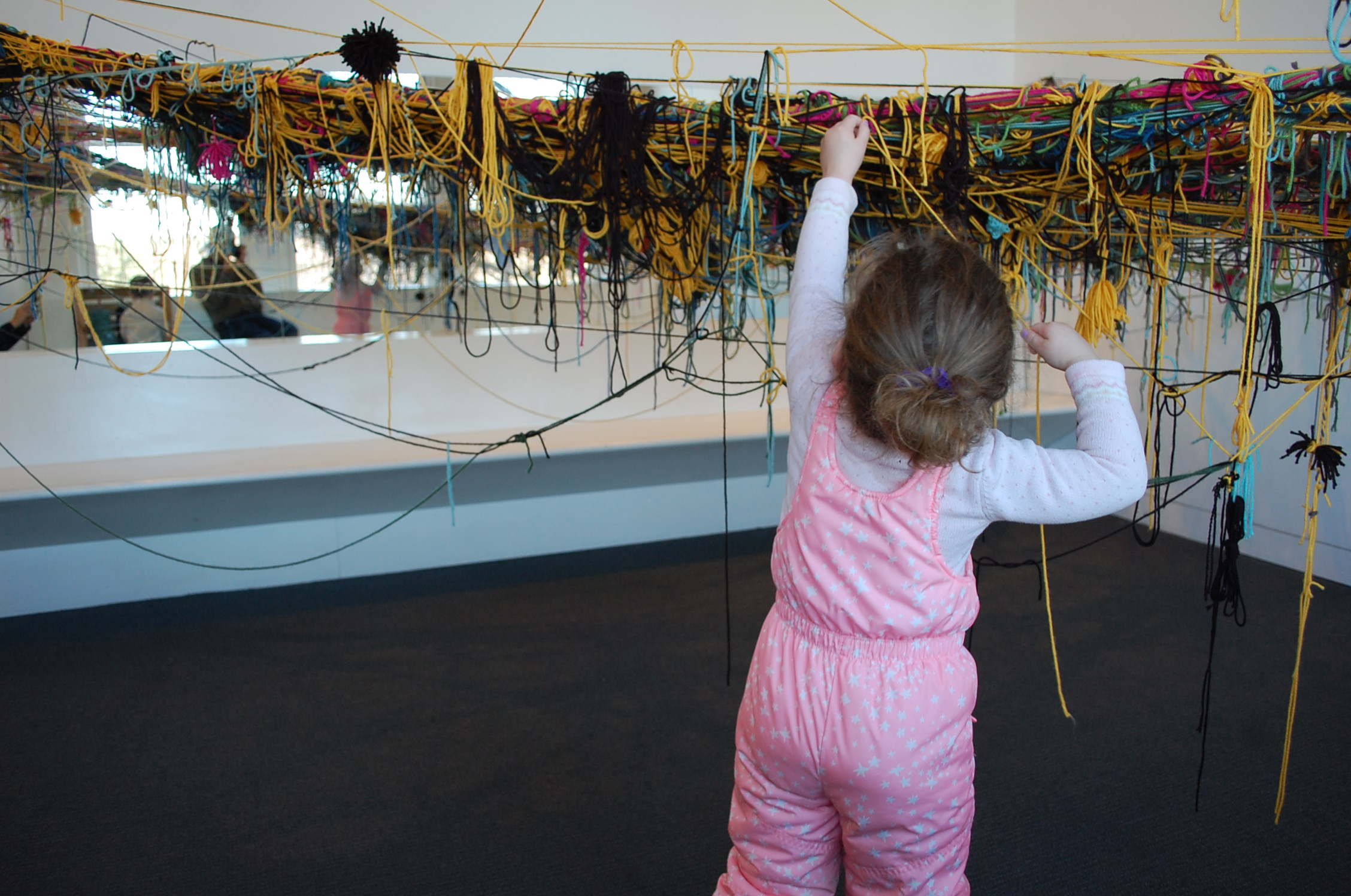
Stella returns to the yarn, cutting and collecting yarn pieces. She brings these to the other room and finds a piece of foam among the loose parts. She carefully constructs a creation on the floor.
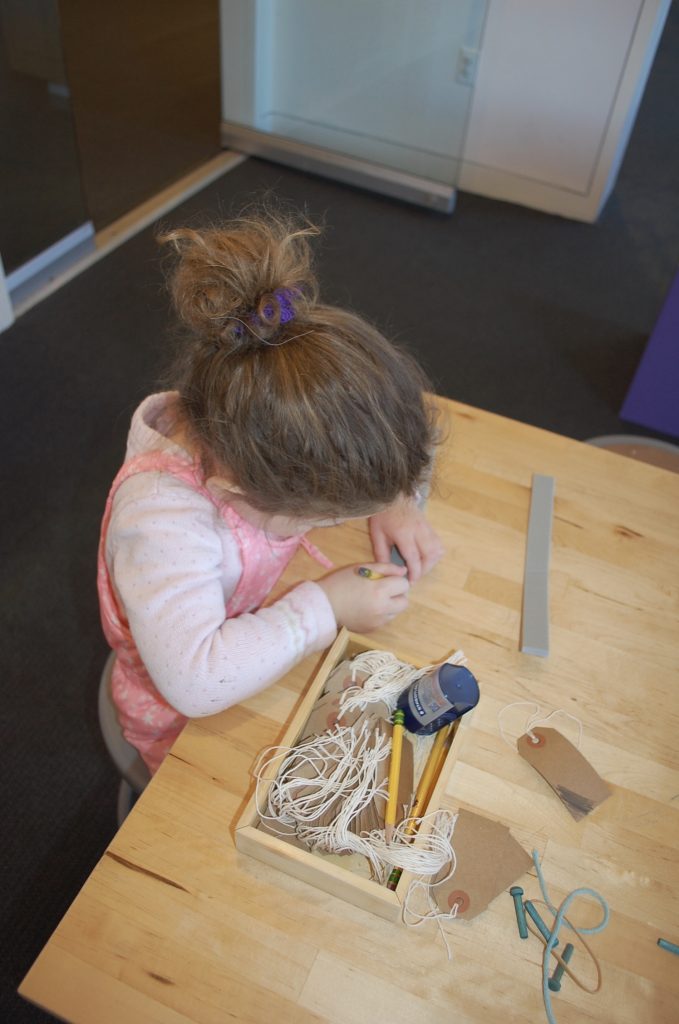
Stella finds more pieces of foam and discovers that she can draw on them – or wave them in the air to make a fan! Gathering some pegs, she sets them beside her foam. She explains: It’s a table (foam); those are food (pegs).
